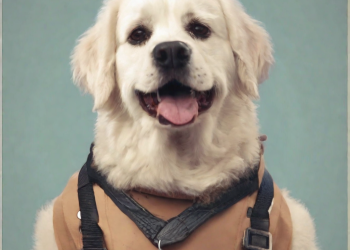What is vestibular syndrome in dogs?
Vestibular syndrome in dogs is a neurological condition that affects the animal’s balance and orientation system. During my research, I discovered that this condition can be caused by a variety of reasons and presents symptoms such as dizziness, disorientation, and difficulty walking. It is important to be aware of the signs and seek veterinary help for proper diagnosis and treatment.
What is vestibular syndrome in dogs?
Vestibular syndrome in dogs is a condition that affects the vestibular system, responsible for maintaining balance and spatial orientation in the body. It can be caused by various reasons, such as infections, injuries, or degenerative diseases. Symptoms include dizziness, disorientation, nausea, and difficulty walking.
Why is it important to know about vestibular syndrome in dogs?
It is important to know about vestibular syndrome in dogs because it is a common condition in canines and can be confused with other diseases. Additionally, it can be a symptom of more serious problems in the nervous system or inner ear. Knowing the symptoms and appropriate treatments can help improve your pet’s quality of life and prevent future complications.
Diagnosis of vestibular syndrome in dogs
The diagnosis of vestibular syndrome in dogs is essential to provide adequate treatment and improve the quality of life of our pet. Below are the methods used to diagnose this disease:
Physical and neurological examination
The first step in diagnosing vestibular syndrome in dogs is to perform a complete physical and neurological examination. The veterinarian will examine the dog’s ears, eyes, and head to look for any abnormalities that may be causing the symptoms.
Imaging tests
Imaging tests, such as X-rays and MRI, can be helpful in detecting possible causes of vestibular syndrome in dogs, such as tumors or lesions in the brain.
Blood and urine tests
In some cases, blood and urine tests may be performed to rule out other diseases that may be causing the symptoms of vestibular syndrome in dogs.
Differentiation from other neurological diseases
It is important to differentiate vestibular syndrome in dogs from other neurological diseases, such as intervertebral disc disease or encephalitis, as the treatment and prognosis may be different.
Remember that it is essential to go to the veterinarian if you have any symptoms of vestibular syndrome in your dog. Do not attempt to make a diagnosis on your own, as only a professional can determine the cause and the appropriate treatment for your pet.
If your dog has been diagnosed with vestibular syndrome, it is important to follow the veterinarian’s recommendations and provide him with the necessary care for his recovery. In the following section, the possible treatments for this disease are detailed.
III. Treatment of vestibular syndrome in dogs
Treatment of vestibular syndrome in dogs will depend on the underlying cause and the severity of the symptoms. It is important to remember that each dog is unique and may respond differently to treatment. It is essential to follow the veterinarian’s recommendations and adapt the treatment to the individual needs of each dog.
A. Symptom management
- Control nausea and vomiting with medications prescribed by the veterinarian.
- Provide a calm and safe environment to avoid dizziness and falls.
- Avoid sudden changes in diet and maintain a balanced diet appropriate for the dog’s health.
B. Vestibular rehabilitation therapy
Vestibular rehabilitation therapy may be recommended by your veterinarian to help the dog regain balance and coordination. This therapy may include specific exercises and stimulation techniques to improve the function of the vestibular system.
C. Medications to control symptoms
In some cases, your veterinarian may prescribe medications to control the symptoms of vestibular syndrome, such as dizziness and nausea. It is important to follow the veterinarian’s instructions and not administer medications without his or her approval.
D. Treatment of the underlying cause
If vestibular syndrome in dogs is caused by an underlying disease, it is essential to treat it appropriately to improve symptoms and prevent future relapses. The veterinarian may recommend additional testing and treatment specific to the underlying cause.
Remember that treating vestibular syndrome in dogs can be a gradual process and may require patience and dedication. It is important to follow the veterinarian’s recommendations and provide a safe and comfortable environment for the dog during its recovery.
Home care for dogs with vestibular syndrome
Vestibular syndrome in dogs can be a frightening experience for both the dog and its owner. However, with proper treatment and care, most dogs can make a full recovery. Below are some important precautions to keep in mind to help your dog overcome vestibular syndrome:
Proper food and nutrition
- It is important to ensure that your dog has access to fresh water at all times to prevent dehydration, especially if he is experiencing nausea and vomiting.
- If your dog has difficulty eating due to symptoms of vestibular syndrome, it may be necessary to feed him with a syringe or small spoon.
- Consult with your veterinarian about the best diet for your dog during his recovery.
Injury prevention
- Dogs with vestibular syndrome may have difficulty maintaining balance and may be prone to falls and injuries.
- It is important to keep your dog in a safe environment and prevent him from going up and down stairs or jumping off furniture.
- If necessary, you can use a leash or harness to help your dog walk and prevent him from getting hurt.
Help with walking and balance
- Dogs with vestibular syndrome may have difficulty walking and maintaining balance.
- You can help your dog walk by gently holding him under his abdomen or using a towel for support.
- If your dog has difficulty maintaining balance, it may be helpful to place non-slip rugs or mats on the floor to provide a more stable surface.
Adaptation of the environment to facilitate recovery
- It is important to keep your dog in a calm, stress-free environment during his recovery.
- It may be helpful to place your bed or sleeping area in a quiet, cozy place.
- If your dog has difficulty reaching his food or water bowl, it may be necessary to place it in a more accessible location or use raised dishes.
With this home care and a lot of love and patience, your dog can fully recover from vestibular syndrome. Remember to always consult with your veterinarian for specific advice for your dog and to ensure that he is receiving the appropriate treatment for his recovery. Don’t lose hope, your dog can overcome vestibular syndrome and return to being your happy and active four-legged companion!
V. Prognosis of vestibular syndrome in dogs
The prognosis for vestibular syndrome in dogs can vary depending on the cause and severity of the disorder. In general, peripheral vestibular syndrome has a better prognosis than central vestibular syndrome. Below are some important aspects to consider regarding the prognosis of vestibular syndrome in dogs:
A. Recovery in cases of peripheral vestibular syndrome
In most cases, dogs with peripheral vestibular syndrome can fully recover within a few weeks. However, it is important to follow the veterinarian’s instructions and provide appropriate care to facilitate recovery.
B. Possible sequelae in cases of central vestibular syndrome
In cases of central vestibular syndrome, the dog may have permanent consequences, such as balance and coordination problems. These consequences may be more evident in older dogs or those with chronic diseases.
C. Factors that may affect the prognosis
Some factors that may influence the prognosis of vestibular syndrome in dogs include:
- Age of the dog: Older dogs may have a less favorable prognosis due to a lower ability to recover.
- Underlying cause: If vestibular syndrome is caused by an underlying disease, the prognosis will depend on the severity and treatment of that disease.
- Severity of symptoms: In more severe cases, the prognosis may be less favorable and recovery may be slower.
D. Importance of veterinary follow-up
It is essential to follow the veterinarian’s instructions and properly monitor the dog after an episode of vestibular syndrome. This may include follow-up visits, follow-up tests, and treatment adjustments if necessary.
In general, the prognosis of vestibular syndrome in dogs can be favorable if it is detected and treated early. It is important to be attentive to any change in our dog’s behavior or health and go to the veterinarian if there is any concern.
SAW. Prevention of vestibular syndrome in dogs
Vestibular syndrome in dogs is a condition that can be prevented to some extent. Below are some measures that can help prevent this disease in our canine friends:
A. Care to prevent diseases that can cause vestibular syndrome
- Keep our dog’s vaccines and deworming up to date.
- Carry out periodic veterinary check-ups to detect and treat in time any disease that may affect the vestibular system.
- Control your diet and avoid obesity, as this can increase the risk of diseases that affect the inner ear.
B. Avoid trauma to the head and ears
- Prevent our dog from hitting its head or ears, whether while playing or in risky situations.
- Supervise our dog when he is in places with objects that could cause damage to his head or ears.
C. Control of chronic diseases
- If our dog has a chronic disease, it is important to follow the veterinarian’s instructions to properly control it.
- Some diseases such as diabetes or hypertension can affect the vestibular system, so it is important to keep them under control.
D. Importance of periodic veterinary check-ups
- Carrying out periodic veterinary check-ups allows us to detect and treat in time any disease that may affect our dog’s vestibular system.
- In addition, the veterinarian may perform imaging tests and blood and urine tests to rule out or confirm the presence of diseases that may cause vestibular syndrome.
In summary, although we cannot completely prevent vestibular syndrome in dogs, following these measures can help reduce the risk of our dog developing it. Always remember to be attentive to any changes in your pet’s behavior or health and go to the veterinarian if you have any questions or concerns.
VII. Real cases of dogs with vestibular syndrome
Vestibular syndrome in dogs is a condition that can be frightening for pet owners. However, there are many cases of dogs that have successfully overcome this disease and have returned to leading a normal life. Below we present some real cases of dogs with vestibular syndrome:
Stories of dogs that have overcome vestibular syndrome
- Max, an 8-year-old Labrador, was diagnosed with peripheral vestibular syndrome. After proper treatment and rehabilitation therapy, Max made a full recovery and was once again an active, playful dog.
- Lola, a 12-year-old poodle, suffered an episode of central vestibular syndrome. Although her recovery was slower, with the help of her owner and veterinary follow-up, Lola managed to walk again and maintain her balance.
Experiences of owners of dogs with vestibular syndrome
Many owners of dogs with vestibular syndrome have shared their experiences online, providing support and advice to other owners going through the same thing. Some of the most common tips include:
- Stay calm and provide lots of love and support to your dog during his recovery.
- Follow the veterinarian’s instructions and do not administer medications without his or her approval.
- Perform rehabilitation therapy at home to help your dog regain his balance and coordination.
Tips and recommendations based on real cases
Based on the experiences of other owners of dogs with vestibular syndrome, we can offer the following tips and recommendations:
- If your dog exhibits symptoms of vestibular syndrome, see your veterinarian immediately for proper diagnosis and treatment.
- Provide your dog with proper food and nutrition to aid in his recovery.
- Adapt your dog’s environment to facilitate recovery, such as placing non-slip mats and avoiding stairs.
Inspiration for dog owners who are going through this situation
Seeing other dogs who have overcome vestibular syndrome can be a source of inspiration and hope for owners who are going through this situation. Remember that with proper treatment and lots of love and care, your dog can make a full recovery too.
Frequently asked questions about vestibular syndrome in dogs
Some common questions about vestibular syndrome in dogs are answered below:
Is vestibular syndrome in dogs a common disease?
Vestibular syndrome in dogs is not a common disease, but it can occur in dogs of any age. It has been observed to be more common in older dogs.
Can dogs fully recover from vestibular syndrome?
In most cases, dogs can fully recover from peripheral vestibular syndrome. However, in cases of central vestibular syndrome, permanent sequelae may remain.
Is vestibular syndrome in dogs painful?
Vestibular syndrome in dogs is usually not painful, but it can cause discomfort due to symptoms such as nausea and dizziness.
Can older dogs develop vestibular syndrome?
Yes, older dogs are at higher risk of developing vestibular syndrome due to their age and possible chronic illnesses.
IX. Conclusions
A. Summary of the key points of the article
Vestibular syndrome in dogs is a neurological disease that affects the animal’s balance and coordination system. It can be caused by a variety of reasons, such as infections, injuries, or chronic illnesses. Symptoms include dizziness, nausea, vomiting, and difficulty walking. It is important to differentiate between central and peripheral vestibular syndrome for proper diagnosis.
B. Importance of early detection and appropriate treatment
It is crucial to detect and treat vestibular syndrome in dogs as early as possible to improve the chances of recovery. A physical and neurological examination, imaging tests, and blood and urine tests can help the veterinarian determine the underlying cause of the syndrome. In addition, it is important to differentiate it from other neurological diseases for adequate treatment.
C. Final advice for owners of dogs with vestibular syndrome
If your dog has been diagnosed with vestibular syndrome, it is important to follow the veterinarian’s recommendations and provide him with the necessary care at home. This includes proper nutrition, injury prevention, and adapting the environment to facilitate recovery. It is also important to have regular veterinary check-ups to monitor their progress.
D. Invitation to share experiences and consultations with the veterinarian
If you have a dog that has been diagnosed with vestibular syndrome, you are not alone. Many pet owners have been through this situation and can offer advice and recommendations based on their experiences. Do not hesitate to share your doubts and queries with the veterinarian to provide your dog with the best possible care.
What is vestibular syndrome in dogs?
Vestibular syndrome in dogs is a neurological condition that affects the vestibular system, responsible for maintaining balance and spatial orientation. This disease can be caused by various reasons and can occur centrally or peripherally, which affects the treatment and prognosis of the dog.
Definition of vestibular syndrome
Vestibular syndrome in dogs is characterized by an alteration in the vestibular system, which can be caused by an injury or disease in the organs or nerves that compose it. This can cause symptoms such as dizziness, disorientation, and difficulty maintaining balance.
Causes of vestibular syndrome in dogs
There are various causes that can trigger vestibular syndrome in dogs, among the most common are:
- Infections in the middle or inner ear
- Trauma to the head or ears
- Chronic diseases such as hypothyroidism or diabetes
- Tumors in the brain or inner ear
It is important to identify the underlying cause in order to properly treat vestibular syndrome in dogs.
Symptoms of vestibular syndrome in dogs
Symptoms of vestibular syndrome in dogs can vary depending on the cause and severity of the disease, but the most common include:
- Disorientation and difficulty maintaining balance
- Involuntary eye movements (nystagmus)
- Falls and problems walking
- Nausea and vomiting
These symptoms may be more obvious in cases of peripheral vestibular syndrome, while in cases of central vestibular syndrome they may be more subtle.
Difference between central and peripheral vestibular syndrome
Central vestibular syndrome refers to an alteration in the brain or nerves that connect the vestibular system, while peripheral vestibular syndrome is due to an injury or disease in the organs or nerves that make up the vestibular system. The difference between the two lies in the severity of the symptoms and the necessary treatment.









